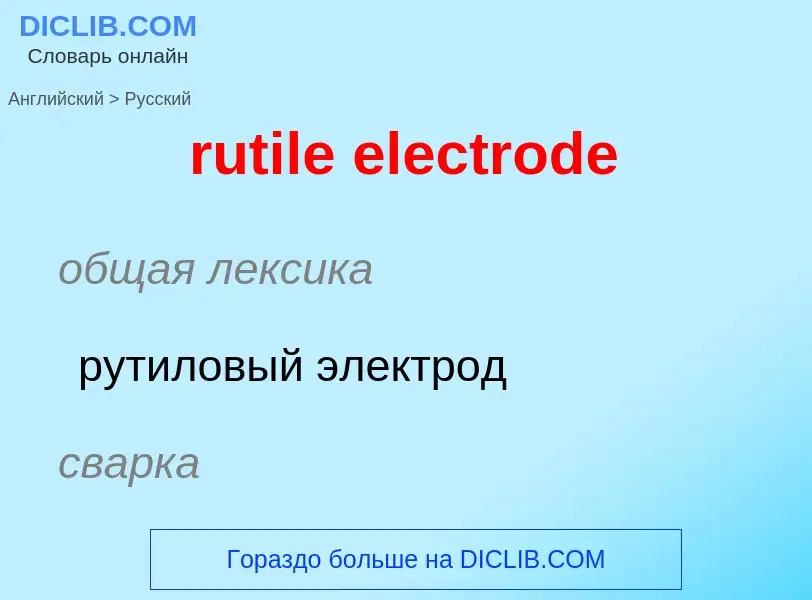Traduzione e analisi delle parole tramite l'intelligenza artificiale ChatGPT
In questa pagina puoi ottenere un'analisi dettagliata di una parola o frase, prodotta utilizzando la migliore tecnologia di intelligenza artificiale fino ad oggi:
- come viene usata la parola
- frequenza di utilizzo
- è usato più spesso nel discorso orale o scritto
- opzioni di traduzione delle parole
- esempi di utilizzo (varie frasi con traduzione)
- etimologia
rutile electrode - traduzione in russo
общая лексика
рутиловый электрод
сварка
электрод с рутиловым покрытием
['ru:t(a)il]
общая лексика
рутил
рутиловый
существительное
минералогия
рутил
общая лексика
ион-селективный электрод
Definizione
Wikipedia

Rutile is an oxide mineral composed of titanium dioxide (TiO2), the most common natural form of TiO2. Rarer polymorphs of TiO2 are known, including anatase, akaogiite, and brookite.
Rutile has one of the highest refractive indices at visible wavelengths of any known crystal and also exhibits a particularly large birefringence and high dispersion. Owing to these properties, it is useful for the manufacture of certain optical elements, especially polarization optics, for longer visible and infrared wavelengths up to about 4.5 micrometres. Natural rutile may contain up to 10% iron and significant amounts of niobium and tantalum.
Rutile derives its name from the Latin rutilus ('red'), in reference to the deep red color observed in some specimens when viewed by transmitted light. Rutile was first described in 1803 by Abraham Gottlob Werner using specimens obtained in Horcajuelo de la Sierra, Madrid (Spain), which is consequently the type locality.


![Rutile in quartz]] Rutile in quartz]]](https://commons.wikimedia.org/wiki/Special:FilePath/Quartz-159832.jpg?width=200)


![Acicular crystals of rutile protruding from a [[quartz]] crystal Acicular crystals of rutile protruding from a [[quartz]] crystal](https://commons.wikimedia.org/wiki/Special:FilePath/Rutile needles.jpg?width=200)
